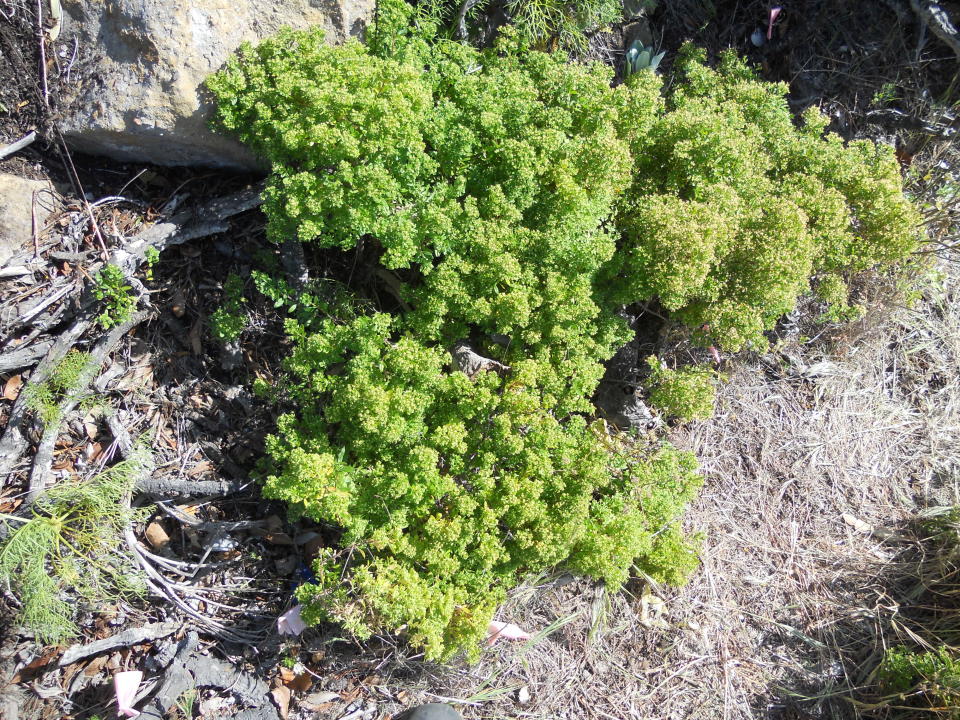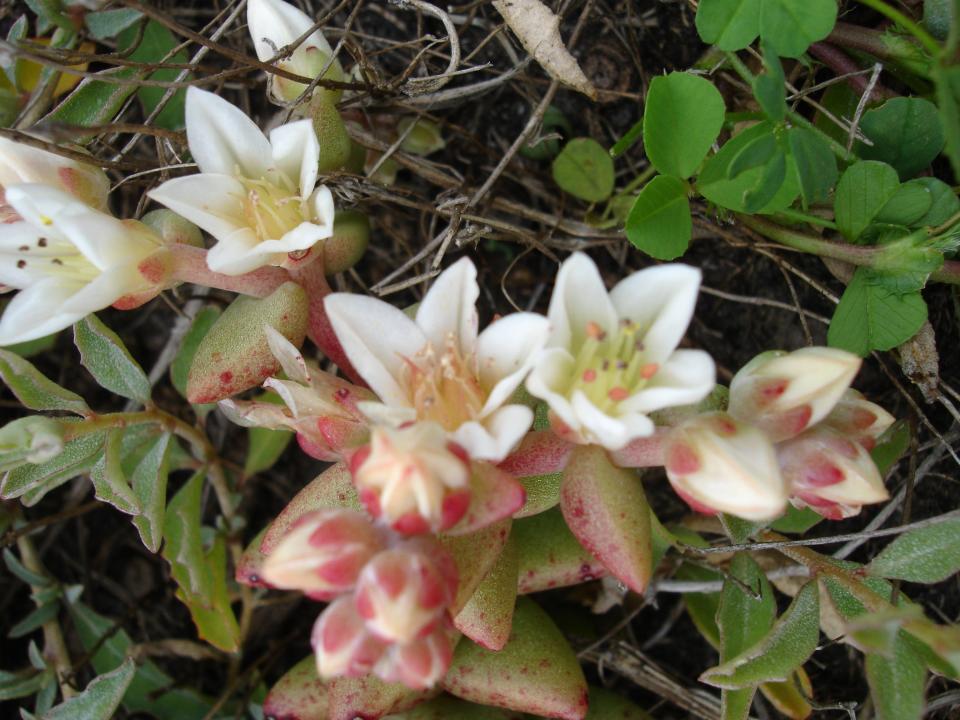With pigs and sheep gone from the Channel Islands, these rare species make a comeback
Two plants found only on the northern Channel Islands off Ventura have beat steep odds, rebounding to a point the U.S. Fish and Wildlife Service removed them the endangered species list.
The plants — island bedstraw and Santa Cruz Island dudleya — spread farther than scientists expected as the land transitioned from decades of ranching to a national park without livestock. As populations got bigger and better distributed, they became more likely to overcome threats.
This week, the federal agency announced they had recovered and no longer required Endangered Species Act protections. The plants were at the brink and made a comeback, said Kathryn McEachern, a research ecologist with the U.S. Geological Survey, one of several agencies working on the plants' conservation.
"It really shows that there is resilience in nature, and that we actually can have a positive effect," she said.

In 1997, the Fish and Wildlife Service listed island bedstraw, Santa Cruz Island dudleya and 11 other Channel Islands plants as endangered and threatened. Agencies had already started a long process to remove the nonnative mammals and restore the native vegetation on the islands, part of the Channel Islands National Park.
Sheep and pigs once brought to the wind-swept, remote islands consumed and trampled vegetation, leaving areas vulnerable to erosion. Nonnative grasslands crept in, and native plants started to disappear.
Efforts by a group of agencies — U.S. Geological Survey, National Park Service, The Nature Conservancy, which owns much of Santa Cruz Island, and the Santa Barbara Botanic Garden — were credited for the comeback.
Scientists from those organizations got together at the California Islands Symposium this week. They were some of the hundreds who came to Ventura to learn about the work and discoveries happening on the California islands.

Found only on Santa Cruz and San Miguel islands, the number of endangered island bedstraw — a shrub with pointed leaves and tiny cream-colored flowers — had dropped into the hundreds before it bounced back. So few plants in limited locations put them at high risk of being wiped out, said McEachern, who started working on the islands in the early 1990s.
"That was cause for alarm," she said.
Pigs brought to the island threatened Santa Cruz Island dudleya, scientists said. Without pigs, the rare succulent remained stable and spread to new areas.
The remote islands have an upside for conservation since the land is protected against urbanization, according to officials. The isolated location also helped keep nonnative animals and plants from returning.
But working there also came with challenges. Scientists had to navigate sheer cliff faces offshore. At times, they surveyed while hanging over rocks or peering through binoculars from a kayak below.
More recently, scientists were able to survey via helicopter and spotted populations they had not previously identified, said John Knapp, a senior scientist with The Nature Conservancy. Now, they are finding island bedstraw farther inland and in multiple locations that once would have been decimated by pigs and sheep, he said.
Cheri Carlson covers the environment for the Ventura County Star. Reach her at cheri.carlson@vcstar.com or 805-437-0260.
This article originally appeared on Ventura County Star: Rare Channel Islands plant species taken off endangered list

